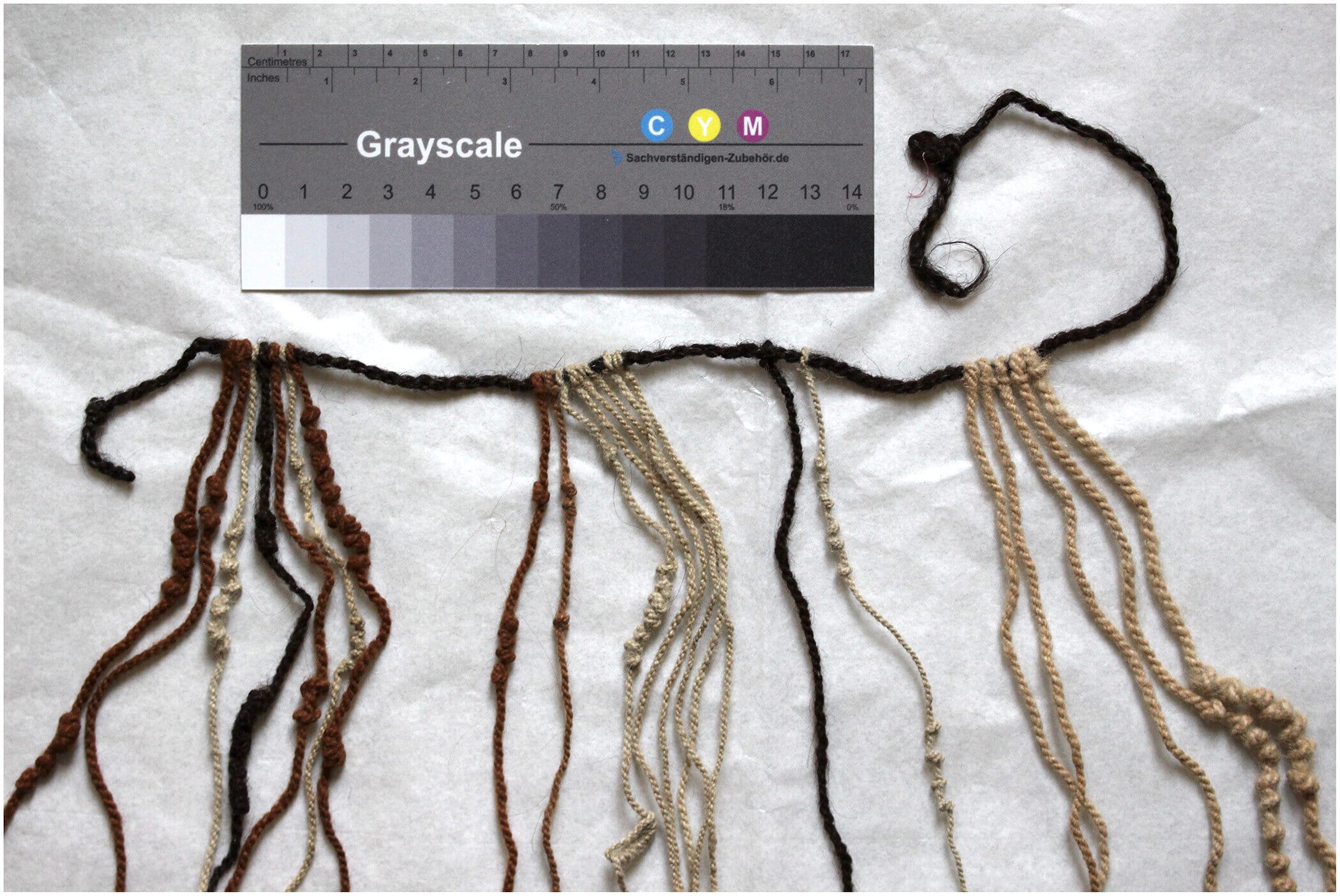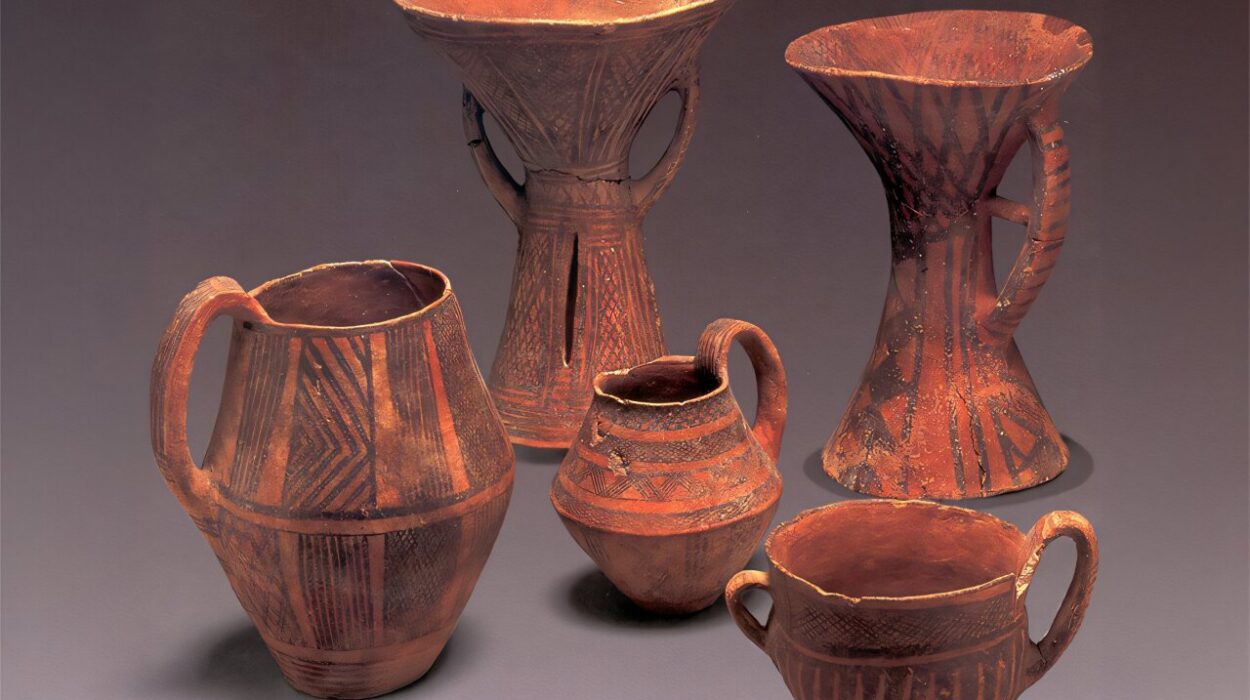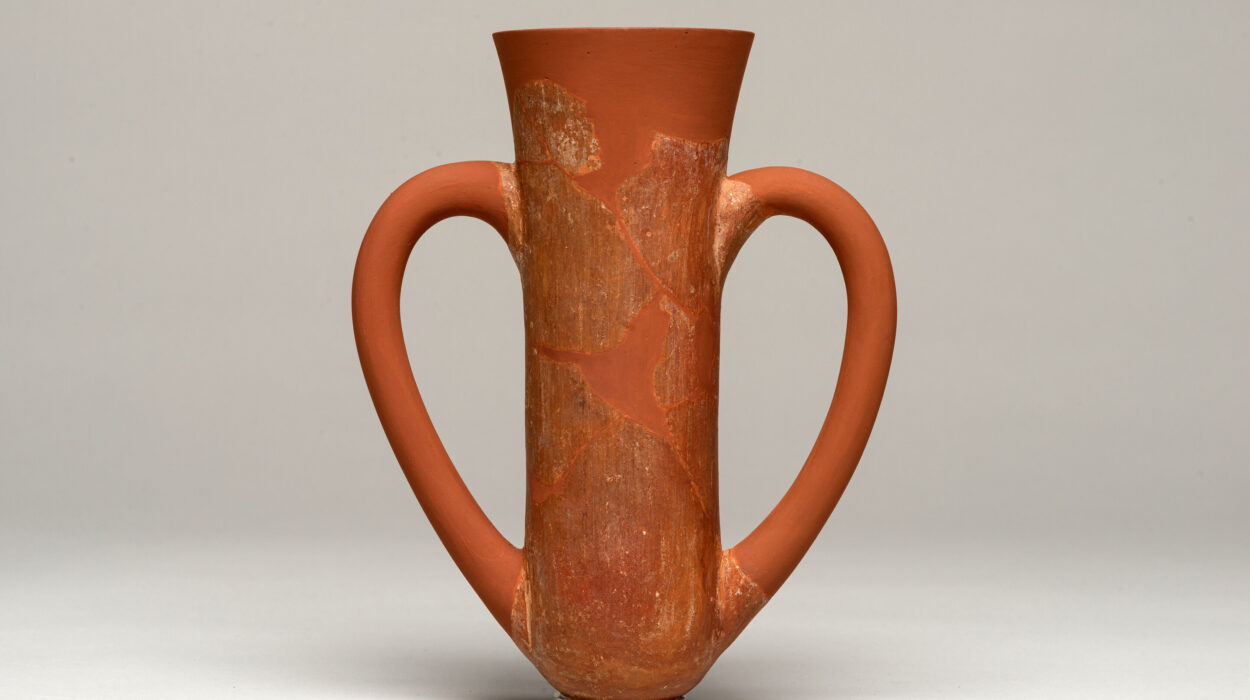Long before databases and spreadsheets organized the world’s information, people had to invent ingenious ways to keep track of numbers, stories, and resources. In the Inka empire of western South America—an empire that stretched across the Andes—information was recorded in something that, at first glance, looks surprisingly simple: a bundle of cords tied with knots.
This device, called a khipu (sometimes spelled quipu), was far more than a string of knots. It was a sophisticated recording system used by the Inka to keep track of taxes, census data, agricultural production, and possibly even stories or histories. Each khipu consisted of a main cord from which other cords hung, often dyed in different colors. The placement of knots along the cords represented numbers in a decimal system. In some cases, these cords were made not from plant fibers, but from something far more personal—human hair.
Who Were the Keepers of the Knots?
Spanish colonial observers who documented life in the Inka empire often wrote about khipus. According to most of these chronicles, khipus were crafted and read by elite male bureaucrats, known as khipukamayuqs. These specialists had the enormous responsibility of maintaining the empire’s records in a society without writing.
For centuries, historians and archaeologists assumed this was the full picture: khipus were a tool of power, made by men at the top of Inka society. One chronicler, Felipe Guaman Poma de Ayala, however, claimed that women also made khipus. His account was largely dismissed as unusual or unreliable, and the dominant view persisted—that khipus were the domain of the elite.
By the 19th and 20th centuries, however, new evidence emerged. Peasants and laborers on haciendas were also documented making khipus, suggesting that these knotted cords were not reserved for emperors and their administrators. But the question remained: who truly made the khipus in the height of the Inka empire, and what can those cords tell us about the people behind them?
Hair as a Signature
One fascinating clue lies in the very material of some khipus. When cords were made from human hair, researchers believed they acted as a kind of signature—a personal marker that linked the object to its maker or user. If khipus were made by elite men, as assumed, then the hair found in the cords should have belonged to elite men.
That assumption has now been directly tested. A team of researchers analyzed one such khipu, applying modern scientific techniques to strands of human hair woven into the ancient cords. Their results, published in Science Advances, turned long-held beliefs upside down.
Reading the Past Through Science
To uncover the origins of the hair, scientists used radiocarbon dating and isotope ratio mass spectrometry. By measuring the carbon, nitrogen, and sulfur in the sample, they could not only determine when the khipu was made but also learn about the diet and living environment of the individual whose hair it contained.
The khipu dated back to around 1500 CE, near the height of the Inka empire. But the dietary clues told a story that was completely unexpected. Instead of the meat- and maize-rich diet typical of elites, this individual’s diet was dominated by tubers and greens—foods far more common among peasants and agricultural workers.
Even more telling, the isotopes suggested that this person lived in the highlands, between 2600 and 2800 meters above sea level, in what is today southern Peru or northern Chile. The absence of marine resources in the diet confirmed they lived far from the Pacific coast, unlike many of the empire’s political centers.
A Commoner Behind the Knots
These results point to a striking conclusion: the maker or user of this khipu was likely not an elite male administrator, but a commoner. This discovery disrupts the long-standing image of khipus as exclusive instruments of imperial power. Instead, it suggests that record-keeping may have been more widespread, involving people across different social classes and possibly women as well.
While this finding does not close the debate, it adds depth to our understanding of the Inka empire. It shows that the story of khipus is not one of a single, centralized bureaucracy, but potentially of diverse communities using cords and knots to record their own lives, resources, and responsibilities.
The Mystery Still Tied in Knots
What makes khipus so fascinating is how much we still don’t know. Were they purely numerical records, or did some encode narratives and stories? Were they personal tools as much as state instruments? The discovery that commoners’ hair was woven into one challenges the strict divide between elite and ordinary Inka life, hinting at a more complex and democratic use of knowledge.
The particular individual behind this khipu remains unknown. We cannot recover their name, their face, or the specific purpose of their knots. But through scientific analysis, we now glimpse a more inclusive history—one where the threads of everyday people, not just elites, helped weave the fabric of empire.
Rethinking the Inka’s Legacy
The Inka empire left no written records in the traditional sense, but khipus demonstrate that they developed a rich and ingenious system of memory. This new research not only illuminates who may have made these cords but also challenges assumptions about who had access to knowledge in one of the world’s great civilizations.
Every strand of hair, every knot, and every cord carries with it a human story—stories we are only beginning to untangle. The latest discovery is a reminder that history is not fixed, but continually rewritten as new voices, new evidence, and new perspectives come to light.
More information: Sabine Hyland et al, Stable isotope evidence for the participation of commoners in Inka khipu production, Science Advances (2025). DOI: 10.1126/sciadv.adv1950






